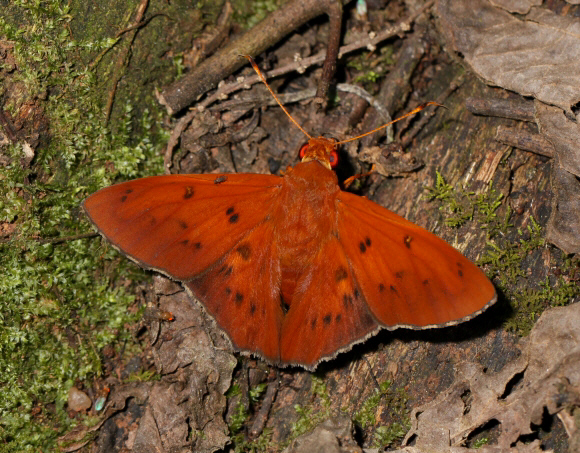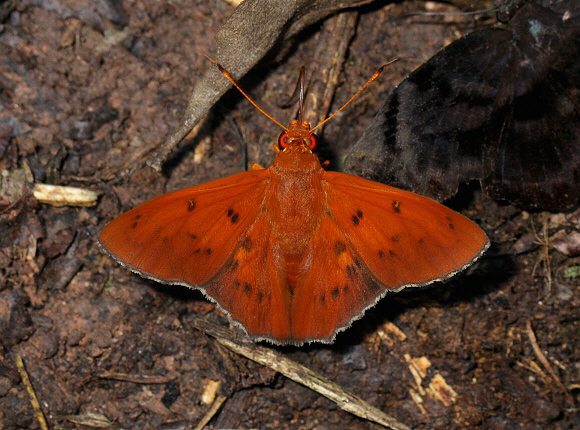
Introduction
There are a large number of neotropical butterflies that are crepuscular in behaviour – i.e. they fly mainly at dusk and / or dawn. Among them are Brassolines including Caligo, Opsiphanes, Opoptera etc; and numerous skippers in the tribe Eudamini.
The crepuscular genera in the Eudamini include Bungalotis, Dyscophellus, Nascus, Porphyrogenes and Salatis – all powerful flyers with a quite amazing turn of speed.
Dyscophellus comprises of 9 species, all reddish or ochreous-brown in colour, with small distinctive blackish markings. In common with many other crepuscular skippers worldwide, these red-eyed species have extremely good vision, even in very poor light. This enables them to be alert to the slightest movement, and combined with their precise and extremely rapid flight, helps them to avoid predation by birds.
Dyscophellus ethyras appears to be confined to Peru and Brazil, but it is possible that it also occurs in Ecuador and Bolivia.

Habitats
This species is found in the rainforests of the eastern Andean foothills, and the lowlands of Mato Grosso and Rondonia in Brazil, at altitudes below about 900m.
Lifecycle
Unknown.
Adult behaviour
Males, which can be recognised by the androconial fold on the costa of the forewings, fly extremely rapidly, zig-zagging back and forth a few inches above ground level, often in company with other crepuscular skippers. They are attracted to urine, faeces, rotting fish and other noxious substances.

